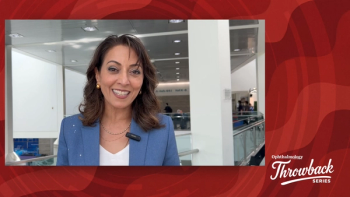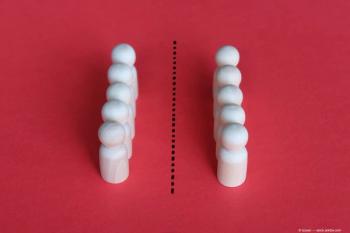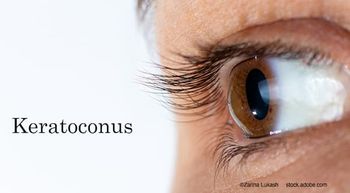
Flexible glaucoma procedure serves wide variety of patients
Juan Carlos Izquierdo, MD, decribes how CO2 laser-assisted sclerectomy surgery is a successful, less invasive, and more simple option for a wide range of glaucoma patients. Due to his overall success with the CLASS procedure, he no longer performs trabeculectomy.
By Juan Carlos Izquierdo, MD; Special to Ophthalmology Times
Dr. IzquierdoAs the population ages, the number of people with glaucoma continues to rise, creating an even greater demand for effective therapies to treat it.
Scientists, physicians, and industry have responded to this challenge, and the past decade has seen the development of a number of therapies meant to lower pressure and improve patient’s quality of life by decreasing the burden of topical medications.
The group of micro-invasive glaucoma surgeries (MIGS) now available has made progress in combining glaucoma and cataract procedures for patients with comorbid disease. However, these MIGS devices are not always available in all countries, nor do many of them offer sufficient IOP control for more severe patients.
Carbon dioxide (CO2) laser-assisted sclerectomy surgery (CLASS) is a successful, less invasive, and more simple option for a wide range of glaucoma patients.
How it’s done
CLASS is performed with a surgical system (IOPtiMate, IOPtima) that consists of a 10.6-μm wavelength CO2 laser accompanied by a micro-manipulating scanner and a control unit.
First, a standard scleral flap (5 × 5 mm) is made in the clear cornea to create a bed that serves as a fluid reservoir.
The laser then precisely and delicately ablates the sclera in a pre-selected grid pattern until Schlemm’s canal is “unroofed” and aqueous begins to percolate through a thin trabecular meshwork membrane. This automatically terminates the ablation process as the laser energy is absorbed by the percolated fluid. The scleral flap is then closed and the conjunctiva is sutured.
This non-penetrating surgery serves patients with both open-angle and pseudoexfoliative glaucoma without the complications common when the globe is penetrated, such as hypotony, blebitis, foreign body sensation, or endophthalmitis.
I recently reported on a comparative study of 49 eyes that underwent trabeculectomy compared with 39 eyes that underwent CLASS.1 All had refractory glaucoma and all also received a biodegradable collagen matrix implant (Ologen, Aeon Astron). In the trabeculectomy group, mean IOP at 1 year was 12.06 ± 1.43 mm Hg, compared with 19.22 ± 9.20 mm Hg preoperatively. This group had an overall success rate of 85.7%.
Postoperative complications included athalamia 4%, hemorrhagic detachment 2%, choroidal detachment 2%, and 5% needed additional surgery due to persistently high IOP.
In the group that received the CLASS procedure, mean IOP at 1 year was 12.54 ± 1.51 mm Hg compared with 22.87 ± 9.17 mm Hg at baseline.
Rate of success
The success rate was 94.9%, and postoperative complications included early transient ocular hypertension (4%), which was resolved in all cases at 1 month postoperatively. During the first 9 months postoperatively, 18% of patients received laser goniopuncture, 12% had needling, and 5% had an iridectomy.
It was concluded that CLASS was as effective as trabeculectomy, with fewer complications and better maintenance of visual acuity.
While very effective as a stand-alone procedure, the CLASS procedure also yields excellent outcomes when combined with phacoemulsification in patients with comorbid cataract and glaucoma.
For combined procedures, I perform a fornix-based periotomy and then create the 5- × 5-mm scleral flap prior to performing phacoemulsification.
Once the cataract is removed and the new lens is in place, I return to the CLASS procedure, ablating the sclera until Schlemm’s canal is unroofed and then closing and suturing the conjunctiva.
Following a combined CLASS + phacoemulsification procedure, my patients frequently have pressure near 5 mm Hg on the first day, but the anterior chambers remain full, rather than flat. Pressure normalizes between 1 and 3 weeks, usually between 10 and 13 mm Hg. The pressure reductions are very comparable to trabeculectomy, with fewer medications and fewer complications.
Patients also have less inflammation compared with a trabeculectomy.
My postoperative regimen consists of an antibiotic with dexamethasone for 10 days, then pilocarpine for 2 weeks, and prednisolone acetate (Pred Forte, Allergan) for 4 to 5 months. I see my patients at 1 day, 1 week, and 1 month postoperatively, and then every 2 to 3 months depending on how they are doing.
Though cataract surgery alone is always best for ensuring refractive results, I have found that CLASS is not as negatively impactful as trabeculectomy on patients’ refractive outcomes. I use aspheric or toric lenses in this group and find that there is no impact on lens placement or rotation.
Also, surgically induced astigmatism is less with CLASS than trabeculectomy, which helps achieve successful outcomes. Less inflammation means patients are seeing well and appreciating their new IOL in 2 to 3 days, rather than having blurry vision for 2 weeks as is common with trabeculectomy. Due to my overall success with the CLASS procedure, I no longer perform trabeculectomy.
Reference
1. Izquierdo JC, Quezada F, Corina M, Gonzalez Mendez AL. Clinical results of CO2 laser-assisted sclerectomy surgery (CLASS) and ologen implant compared to trabeculectomy and ologen implant in patients with refractory open-angle glaucoma. Presented at ASCRS annual meeting. Los Angeles, CA. May 2017.
Juan Carlos Izquierdo, MD
Dr. Izquierdo is director of Glaucoma Services, Oftalmo Salud, Lima, Peru. He declares no financial disclosure related to IOPtima.
Newsletter
Don’t miss out—get Ophthalmology Times updates on the latest clinical advancements and expert interviews, straight to your inbox.


















































.png)


